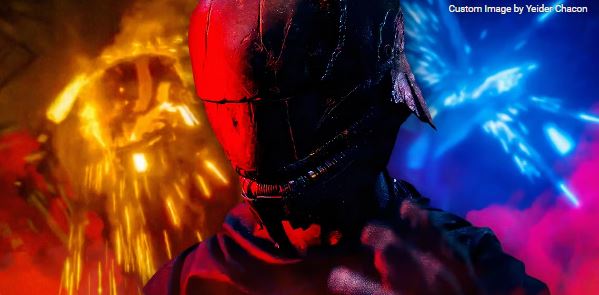The rare Star Wars ore known as cortosis makes its live-action debut in The Acolyte, with a Sith Lord using it to devastating effect against the Jedi. Viewers were shocked to see the mysterious Sith Lord – known as Qimir and The Stranger – not only cut through a contingent of Jedi in The Acolyte episode 5 “Night,” but he also uses a helmet and gauntlets that short out his opponents’ lightsabers. Although such a material has never been shown in live-action before, cortosis has a long and fascinating history in the two Star Wars continuities.
Lightsabers are among the deadliest personal weapons in the galaxy, with Force-imbued crystals powering them and blades that can cut through nearly any material, save for other lightsaber blades and a few rare materials. Perhaps the most famous of these lightsaber-blocking materials is beskar, which is used in Mandalorian armor and weaponry, and made famous by The Mandalorian. Another is phrik, notably used by Separatist MagnaGuards, who wield lethal electrostaffs against Jedi and clone troopers alike. Cortosis is unique among lightsaber-resistant materials, however, as it can not only resist lightsaber blades but also short them out in some cases.
The Acolyte’s Sith Lord Is Clearly Using Cortosis
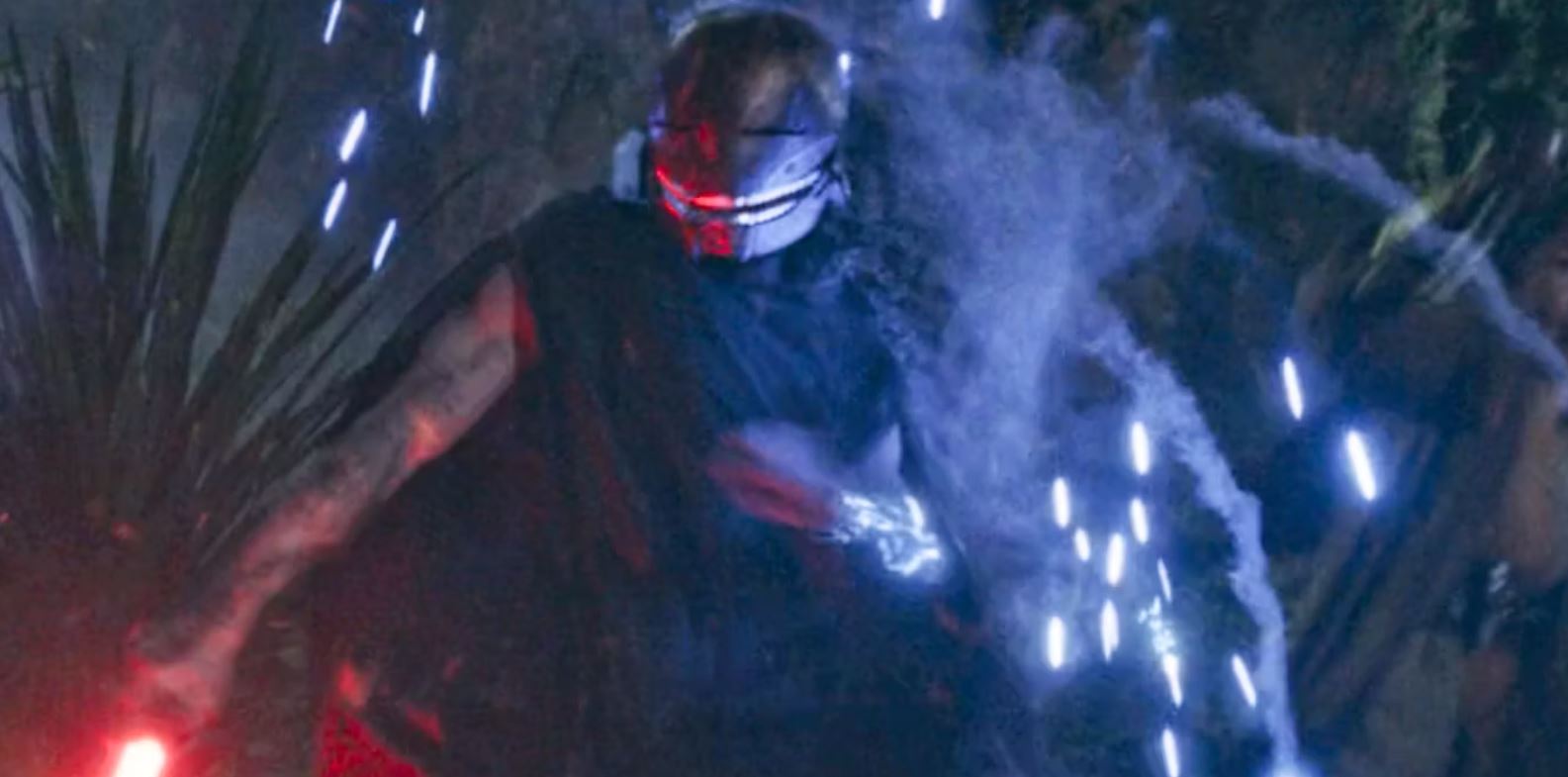
Cortosis, which originates in the Star Wars Legends continuity (formerly known as the Expanded Universe), debuted in the modern Star Wars canon in the 2014 novel A New Dawn by John Jackson Miller. The metal is extremely rare, with the only known sources of cortosis thus far being the Mid Rim planet Dinzo and the Outer Rim planet Mokivj. Like its original incarnation in the Legends continuity, cortosis can block lightsaber blades and absorb blaster bolts, and it has the added ability of temporarily shorting out lightsaber blades, leaving their wielders briefly vulnerable. Cortosis does have one notable weakness, however.
Despite its incredible ability to absorb energy from blaster bolts and lightsaber blades, cortosis is otherwise useless. The metal is brittle, struggling to withstand physical attacks. Jecki Lon exploits this weakness in “Night,” inflicting multiple physical attacks on Qimir’s helmet, damaging it, and causing it to fall off, revealing the Sith’s identity. Cortosis also cannot withstand continuous energy attacks, with Thrawn exploiting this weakness in Timothy Zahn’s Thrawn: Alliances by using a lightning gun (a weapon that also originated in the Legends continuity). It seems that the level of refinement determines whether cortosis blocks lightsaber blades or shorts them out.
The Legends Origin Of Cortosis Ore
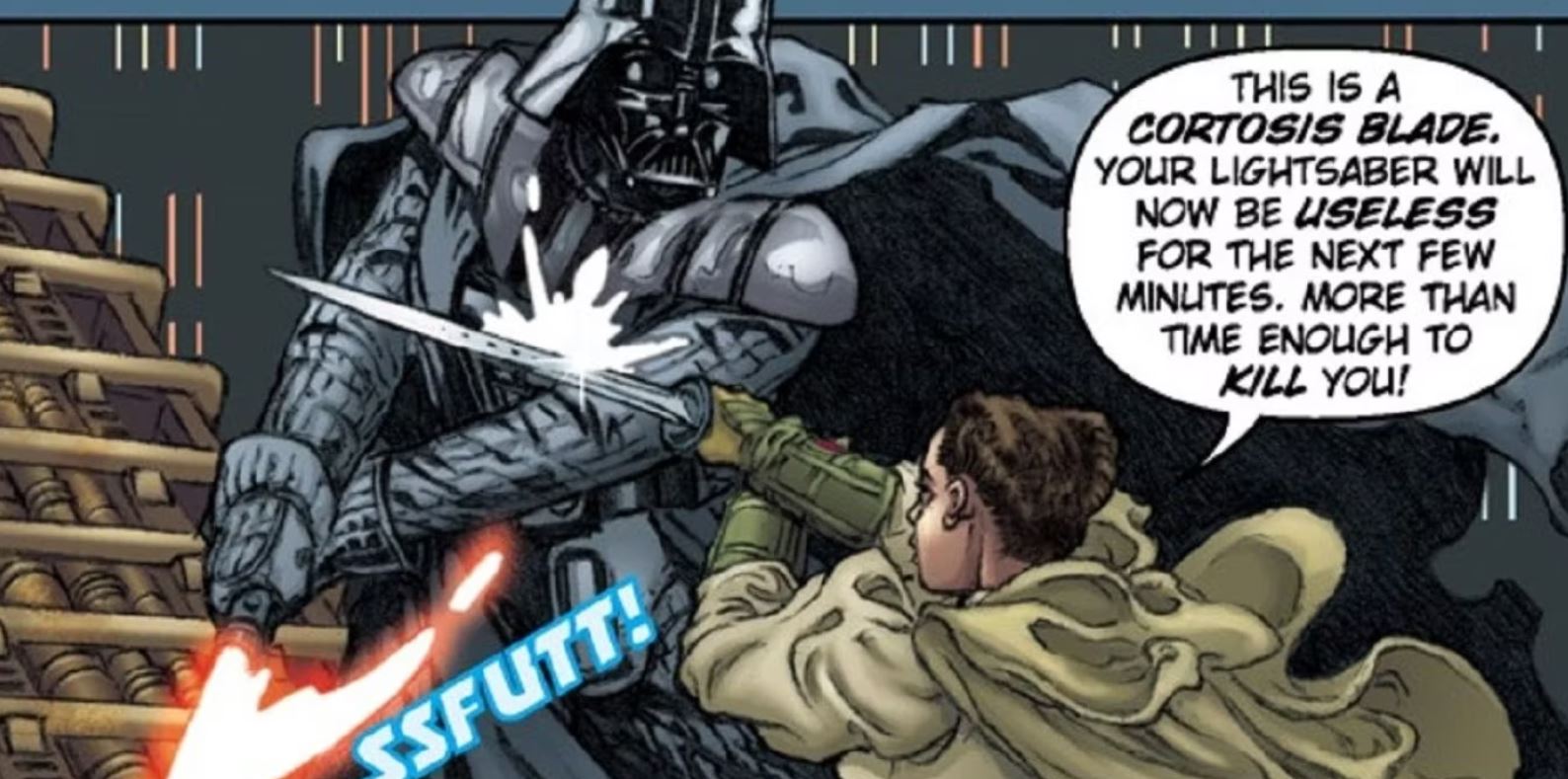
Cortosis first appeared in Michael A. Stackpole’s 1998 novel I, Jedi, though Stackpole credits Timothy Zahn as the material’s true creator. Stackpole once noted that Zahn came up with the idea of the material, planning to use it in the novel Vision of the Future, but he allowed Stackpole to include it in I, Jedi, which was released only a few months before Vision of the Future for the sake of continuity. In 1998, Star Wars Legends was the official Star Wars canon, though it became an alternate timeline (and wellspring of ideas for new properties) upon its 2014 rebranding.
In the Star Wars Legends continuity, cortosis played roles in numerous popular properties, with the forces of both the Old Republic and Sith Empire using swords made of cortosis weave to withstand Jedi and Sith lightsaber blades. During the first year of the Clone Wars, the CIS developed the C-B3 cortosis battle droids (a B2 Super Battle Droid variant) to give them an edge over the Republic’s elite Jedi and clone troopers. In its original Legends iteration, cortosis was extremely dangerous when unrefined, producing deadly energy that made it lethal to the touch.
Among the most famous appearances of cortosis in the Legends timeline are the Jedi Council: Acts of War comics by Randy Stradley and Davidé Fabbri, which had Yinchorri use cortosis shields against the Jedi. Star Wars: Jedi Knight II: Jedi Outcast introduced the Shadowtroopers to Legends-era lore. Shadowtroopers were deployed by the Imperial Remnant in 12 ABY, who artificially imbued troops with the dark side via the Valley of the Jedi and equipped them with lightsabers and cortosis armor. Shadowtrooper armor does not short out lightsaber blades, but it does resist them, though repeated strikes eventually break through the armor.
Is Cortosis Also Force-Resistant?
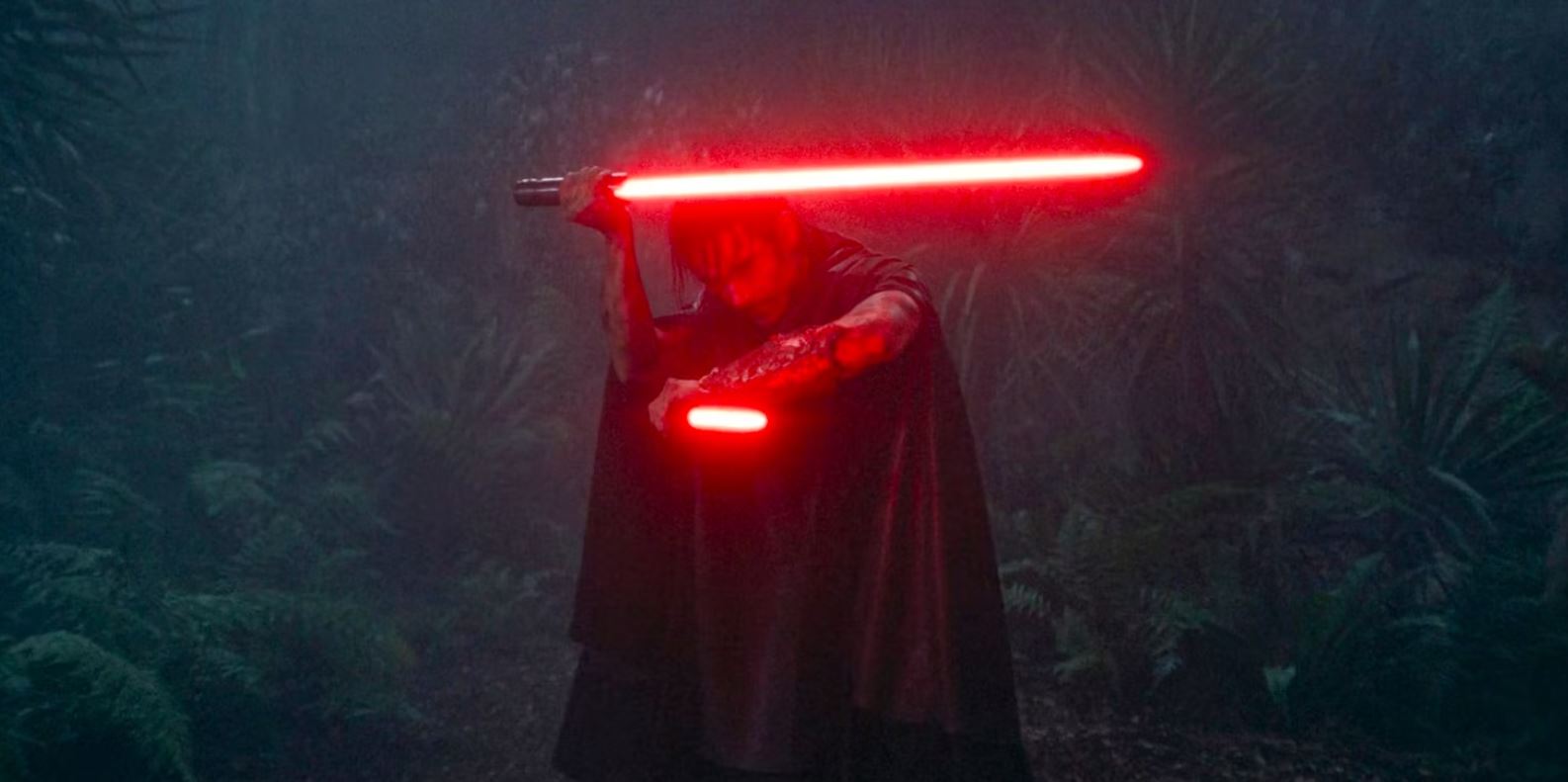
One notable detail in “Night” is Qimir’s refusal to take off his mask, with the Sith Lord indicating that the helmet protects him from Jedi telepathy. This may indicate that cortosis is in some ways Force-resistant in the modern Star Wars canon, differentiating it from its original incarnation in the Legends timeline. This new ability could make some sense since lightsabers are themselves Force weapons, given that their power sources are Force-imbued kyber crystals. Any lightsaber-resistant material could have unique traits in the Force, due to their resistance to lightsabers, though this changes the role of cortosis in the franchise.
If cortosis can intrinsically protect one’s mind from a Force-user, cortosis helmets might have found more widespread use, especially during the wars between the Jedi and the Sith – though the material’s rarity would prevent it from being ubiquitous among the two factions. A more likely explanation for this unique ability is that Qimir simply used a form of Sith sorcery on the helmet, granting it the ability to shield his mind from the Force, though he, notably, easily invades the minds of the Force-users around him, as shown in the episode.
Why Didn’t The Empire Use Cortosis Ore In Canon?
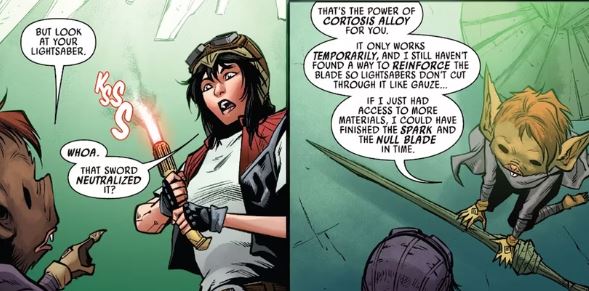
There are several reasons why the Galactic Empire rarely used cortosis in the modern Star Wars canon. The rarity of the metal is one of the clearest reasons, but another is the metal’s uselessness outside countering Jedi. Palpatine wiped out most of the galaxy’s Jedi with Order 66 and the ensuing Jedi Purge, as perpetrated by Darth Vader, brainwashed clone troopers, and the Imperial Inquisitors. With few Jedi left to oppose the Empire, there was little need for a rare metal that was only suitable for use against Jedi.
The majority of the Empire’s enemies used blasters, and although cortosis was blaster-resistant, the far more abundant plastoid used by Imperial stormtroopers was as well. Civilian-grade blasters struggled to burn through stormtrooper armor, though underworld figures and the well-equipped soldiers of the Rebellion exclusively used illegal armor-piercing blasters, which easily tore through stormtrooper armor. Given its rarity and lightsaber resistance, only a few would have a need for and access to cortosis, with Qimir being a fitting example in The Acolyte.
